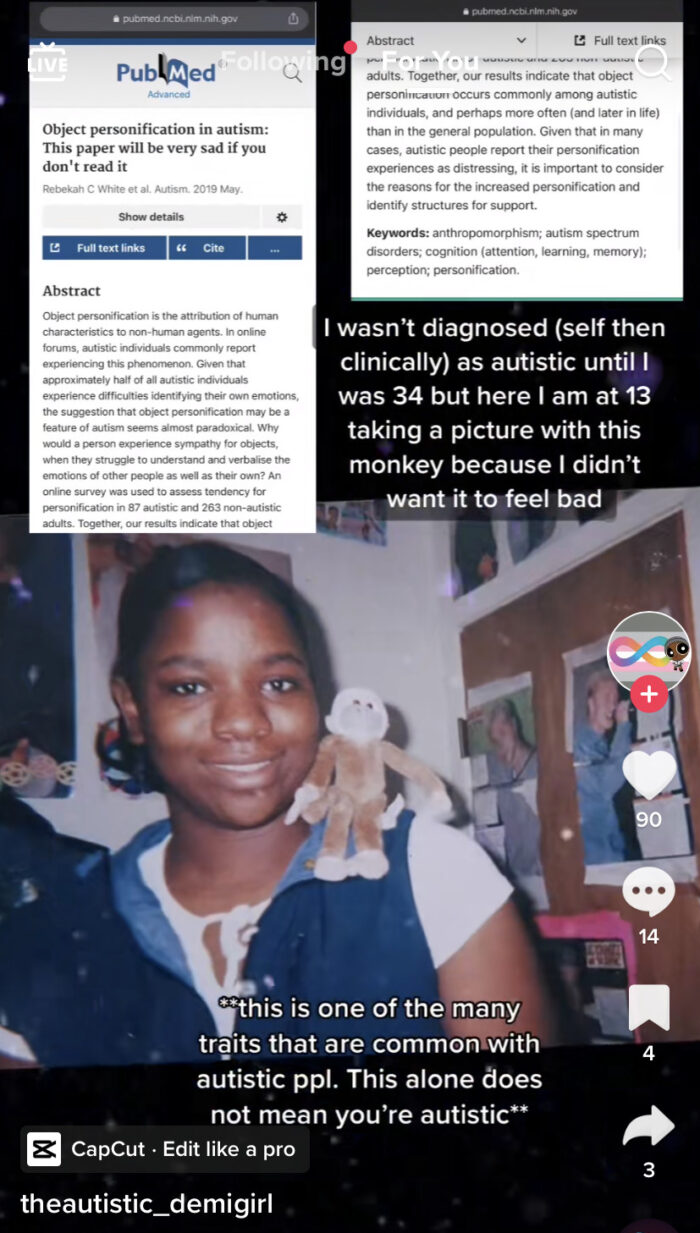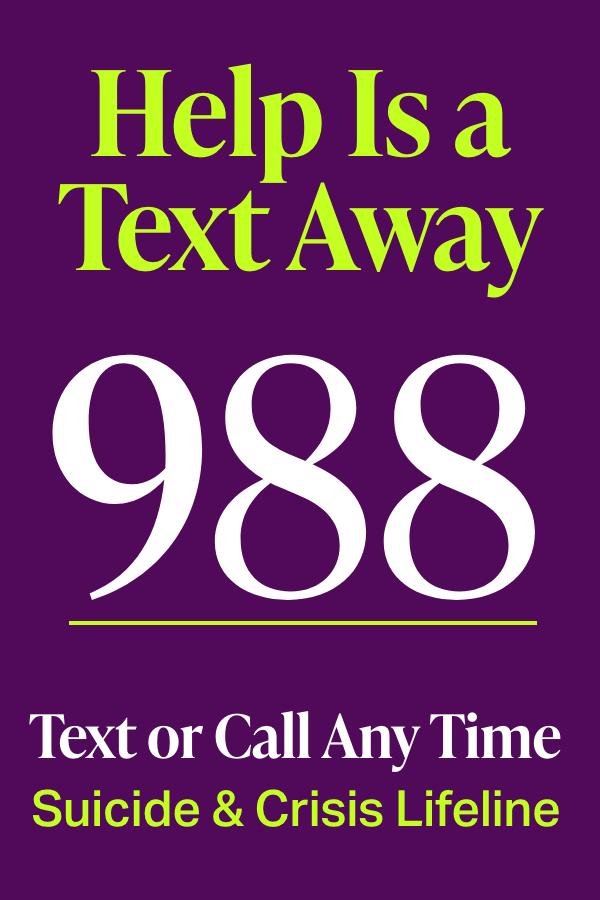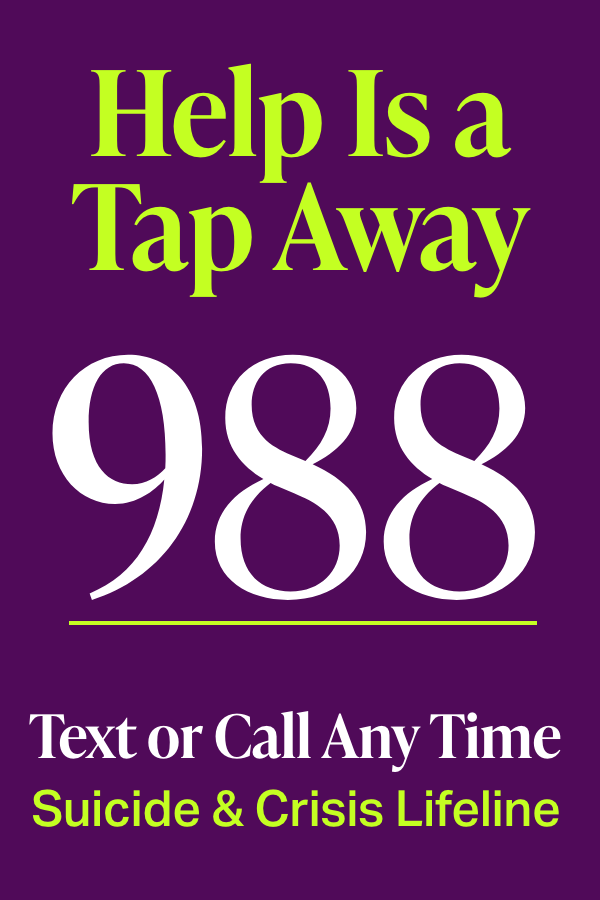Every day on social media, millions of women share their lived experiences—hidden symptoms, overlooked triggers, surprising copes—with ADHD, autism, bipolar disorder, OCD, and other mental health conditions.
You’ve surely watched some of these posts and thought: Omg, it’s me!
But.
BUT.
Is it really you?
Or is it simply a more modern version of Dr. Google, where every possible malady seems well-positioned to take you down overnight?
“Self-diagnosis is very popular,” says Nora Dieguez, Ph.D., a clinical psychologist in Miami who specializes in ADHD, autism, and related conditions. More patients come to her, fresh from TikTok or Instagram, convinced they have ADHD or OCD.
In fact, one study found that 44 percent of people have diagnosed themselves (or someone they know) with a mental health condition. The top self-diagnoses were OCD and anxiety.
Is this an empowering step forward, helping to dismantle stigma around mental health and encourage people to get help? Or is it just contributing to the confusion soup that surrounds these often-complex diagnoses? Worse, could it be exacerbating mental health issues by creating heightened levels of worry and anxiety?
Self-diagnosis is a controversial topic. You will find many articles and organizations that say it’s a clear-cut N-O. But we want to be real with you, dear readers, about the barriers to accessing care and even seeing a therapist. Yes, in most cases, self-diagnosis should be accompanied by a clinical diagnosis.
But self-diagnosis can also raise awareness and, at times, provide needed affirmation. Whether it’s helpful or harmful depends on a number of factors. This includes the condition involved—some are more difficult than others to get clinical support, while others overlap in symptoms and are trickier to tell apart. So let’s get into it.
Self-Diagnosis of Mental Illness: Easy Answers to Hard Questions
Like you, therapists see the self-diagnosis trend on social media. They also see it in their offices every day.
“While that information can be very valuable,” says Dr. Dieguez, “it can lead to a lot of spiraling. I now have this, I now have that.”
No judgments, though. “People are seeking answers for discomfort they’ve yet been able to identify or effectively put language to,” says Jenn Sevier, LPC, a neurodivergent therapist with ADHD and autism. “When something comes along that does resonate, even if only partially, that sense of identification and belonging can be quite powerful.”
Another reality driving the self-diagnosis trend: There can be major barriers to getting an official diagnosis from a mental health professional, says Sevier. One survey, conducted by the nonprofit Access to Care, found that four of 10 Americans who need mental health care cannot access it due to cost or other barriers.
In other words, a lot of people self-diagnose mental illness partly because Reels, Stories, and Shorts are more accessible than actual therapists. After all, 37 percent of Americans live in so-called mental health deserts. That means there are not enough—or no—mental health providers within 50 miles.
In particular, “formal autism diagnoses can be out of reach for so many people,” Sevier explains. “Most autism services remain limited to children under 18 and the costs of an assessment can be a few thousand dollars. Even for those who have access and financial means, there is a very high likelihood of being misdiagnosed or dismissed entirely.”
To be clear, autism is a neurological and developmental disorder, not a mental health disorder, even though it is listed in the DSM-5, the Diagnostic and Statistical Manual of Mental Disorders. Autism is often accompanied by mental illness. According to one nonprofit organization, 70 percent of people with autism also have a mental health condition.
Helena Manning, who goes by @officialbogwitch on TikTok, has amassed a following by talking about all things autism and ADHD (or AuDHD, an unofficial term encompassing those who have both) and her own journey from self- to formal diagnosis. (Manning diagnosed herself with both autism and ADHD in 2013. She was clinically diagnosed with ADHD in 2014 and autism in 2016.)
“One of the things I always say is you need more than one symptom of a disorder,” she says. “A disorder is a cluster of symptoms commonly occurring together. So I try to reign people in by saying, Hey, you need to make sure that you’re not just identifying with only one trait or only one symptom.”
You also have to assess the level of your symptoms. “Yes, loud noises bother you, but are you specifically set off by the vacuum cleaner?” Manning continues. “A lot of people oversimplify things like auditory and light sensitivity. Those can be attributed to many other disorders that are not necessarily autism or ADHD.”
Taking one trait and assuming it’s indicative of an entire condition is one of the shortcomings of self-diagnosis. And it can lead to the wrong treatment. Understanding the full scope of symptoms, and the subsequent treatment plan, is an important distinction between self-diagnosis and clinical diagnosis, says Gabriela Lopez, LPC, a licensed professional counselor in New Jersey who works primarily with teens and children with autism and ADHD.

“For a lot of people, they go on Google and they’re like, Oh, this sounds like me, this sounds like me, and this kind of sounds like me,” Lopez says. “And, although yes, for example, someone who has ADHD has difficulties concentrating, a lot of people don’t really have the background knowledge to know what else may influence concentration. And how has this impacted you in different ways—what can we do about it?”
Plus, let’s be honest: Not every issue you have—whether sleep problems or socializing angst—is related to being neurodivergent or having a mental health condition, notes Lopez. They might be due to other (sometimes more easily addressable) things like anxious behavior around specific life moments or physical issues.
Bias Fuels Autism Self-Diagnosis
As many as 80 percent of women with autism remain undiagnosed after turning 18, according to a report published in the journal Children. This, despite having symptoms for years.
Part of the reason, says Sevier, is that the criteria for formal diagnosis is highly biased. It’s based on a very narrow view of the autistic traits that present in white, cisgender boys from studies conducted by non-autistic researchers. (Like autism, ADHD has historically been thought of as a “boy’s condition.” This has caused many clinicians to overlook it in girls and women.)
A 2022 update in the DSM, the manual professionals use to diagnose, acknowledged the gender differences in autism. However, many in the community, such as @lovelyleobrie on TikTok, don’t think it goes far enough.

“Most unidentified autistic adults wind up with multiple incorrect but ‘official’ mental health diagnoses,” Sevier says, “all rendered by providers lacking adequate knowledge and before their autistic traits are validated.”
Melinda Ledlow, LCPC, a licensed clinical professional counselor who specializes in neurodivergent mental health, believes that “conditions like depression and anxiety can be diagnosed by most mental health professionals. But autism, not so much.”
With autism, she explains, “You have to find someone qualified and trained, which does narrow the field considerably. Need the assessment covered by insurance? Field just got smaller. Need the assessment for an adult? Field got even smaller. Want an assessment by someone who is neurodivergent-affirming? Well, you get the picture.”
Then there are the waitlists for exploring a clinical diagnosis like autism, which Ledlow says can run around six months to more than a year. A licensed practitioner must also put in hours of observation across three categories: social-emotional reciprocity, nonverbal communication, and developing and sustaining relationships.
Muddying matters further, “you can also be autistic and have ADHD, PTSD, OCD, or other conditions. It can get messy and complicated weeding it out,” says Ledlow. (Scientific studies also show that bipolar disorder and ADHD are frequently misdiagnosed. This is, in part, because symptoms overlap with each other and other conditions.)
For all these reasons, the autism community has especially embraced self-diagnosing. “Self-diagnosis is one part of addressing the vital gap in meeting the needs of autistic people, not only in healthcare but in society at large,” says Joey Lawrence, a clinical psychologist with autism and ADHD, and co-founder of Neudle, a psychology practice in Australia that specializes in neurodiversity-affirming support. “It’s important for people to understand their identity so they can put things in place to live the best life they can live.”
Though far from perfect, autism self-diagnosis has proven itself to be clinically valid, which has led to institutional support. For example, the University of Washington recently released a self-diagnosis worksheet for autism, which emphasizes that self-diagnosis for autistic people is rarely found to be inaccurate.
The declaration in the third paragraph says it all: “We believe that if you have carefully researched the topic and strongly resonate with the experience of the autistic community, you are probably autistic.”
When Self-Diagnosing a Mental Health Condition Can Be Good for You
Self-diagnosing can be helpful. According to the experts, self-diagnosis serves a solid purpose when it does any of the following:
- Boosts self-awareness. If your self-diagnosis is leading to a better understanding of your mental health, it’s doing good. Level up by leveraging it to identify your strengths and tease out your challenges. That will help reveal the best path forward.
- Validates how you’re feeling. If you find descriptions of mental health conditions resonating strongly, and helping you focus on your own feelings, it’s probably helping, says Ledlow. Feeling understood and connected can be empowering.
- Connects you with others. Self-diagnosing can be a positive experience if it helps you connect with a supportive community, either online or in-person, where individuals share similar experiences. Feeling a sense of belonging and understanding can contribute mightily to mental well-being.
- Motivates you to take another step. Self-diagnosing is often the first step toward a formal diagnosis, which can be life-changing. When access to therapy is hindered by financial, logistical, or systemic barriers, self-diagnosing might serve as a temporary measure, says Ledlow. This is especially true if you’re struggling to function in everyday life.
Of course, it’s not always necessary to get a formal diagnosis, says Sevier. She believes it’s only important if your symptoms are causing you distress and you want help. If you’re coping just fine as is, seeking help may not be necessary.
When Self-Diagnosing a Mental Health Condition Is Very Very Bad for You
There’s a fine line between scrolling and spiraling, and it bears repeating that social media is rife with mental health misinformation. Here are a few signs your self-diagnosis exercise has gone wrong:
- You’re chasing wild geese. If you find yourself doom-scrolling multiple conditions without a thorough understanding of any of them, it’s time to step back. “While diagnostic labels can be a source of great relief and validation,” Sevier says, “they can also be a source of unnecessary distress when inaccurate, misapplied, or misunderstood.”
- You’re obsessing over a single symptom. Mental health conditions are nuanced, and self-diagnosing based on one symptom or vague list can be misleading. “I see lists that cover too few items, that are not enough to really relate to the condition, and some lists are so long that everybody belongs in that category,” says Dr. Dieguez. In a 2022 study of 100 TikTok videos relating to ADHD, researchers labeled 52 percent “misleading” and only 21 percent “useful.”
- You start speaking in certitudes. If you tell your friends you 100 percent have ADHD, bipolar, OCD, or autism, you’ve taken self-diagnosis too far. Sevier believes self-diagnosis should never replace the guidance of a mental health professional. While self-awareness is valuable, professionals provide expertise in accurate diagnosis, treatment planning, and access to resources.
Sevier says her biggest concern with self-diagnosing is people not receiving the right help and not being empowered with the right information to truly understand their specific needs.
“If someone diagnoses themselves with depression when they’re actually experiencing a neurodivergent burnout [the stress of pretending to be something you’re not to meet others’ expectations],” she says, “they could be pushing themselves to get better in ways that are actually likely to make things worse.”
Plus, access to resources that can make life easier often requires a formal diagnosis. For example, thanks to the Americans With Disabilities Act, workplaces make reasonable accommodations for people with disabilities. These includes ADHD, depression, anxiety disorder, bipolar disorder, and schizophrenia. But without a formal diagnosis, you might have a tricker time getting it approved.
GOTTA READ: Should You Disclose Your Mental Illness at Work?
Say, for instance, you need a quiet workspace to reduce distractions due to your ADHD. A signed paper from a healthcare provider, which you can present to your boss, can help turn that into a reality.
Where to Find Self-Diagnosis Tools and Resources
If only getting an official diagnosis was as simple as one-touch ordering on Amazon. Alas.
But there are some legit places to get expert-backed information and screening tools. For autism, Sevier recommends checking out Embrace Autism. For mood disorders (such as anxiety disorder and depression), ADHD, and PTSD, try the screening tests provided by Mental Health America. “These are not meant to ‘diagnose,’ but to bring attention to potential symptoms, traits, or concerns that may warrant more reflection and professional support,” Sevier says.
In fact, when people use reliable information to self-diagnose, they are more likely to be correct, particularly with personality disorders (which include avoidant personality disorder, borderline personality disorder, and OCD). One 2018 study published in the Journal of Consulting and Clinical Psychology found that self-diagnosis and professional diagnosis of personality disorders often line up when similar screening tools are used.
If you want to work with a clinician who specializes in neurodivergent therapy, you can find one near you using Neurodivergent Therapists’ online directory. This isn’t to bash neurotypical therapists. Ledlow says there are absolutely neurotypical pros who can be beneficial to work with (as long as they are knowledgeable and compassionate). But someone who is neurodivergent themself may be even more understanding since they have a similar lived experience.
So… To self-diagnose or not to self-diagnose mental illness? Both Ledlow and Sevier say it comes down to what you’re seeking. If you’re struggling to function in your daily life and medication or therapy could help, getting a proper diagnosis from a healthcare professional is essential. Likewise if you want to ask your boss for workplace accommodations.
But if you’re functioning fine and a self-diagnosis is simply making you more self-aware—or helping you connect with others virtually or IRL—that’s perfectly awesome. You do you. “The bottom line,” says Ledlow, “is you’re the expert of your own experience.”
Additional reporting by Samantha Leal
Self-Diagnosing: Crosby J. Thriveworks Research Indicates Americans Commonly Diagnose Themselves and Others With Mental Health Conditions. Thriveworks.
Lack of Access to Mental Health Care: More than 4 in 10 U.S. Adults Who Needed Substance Use and Mental Health Care Did Not Get Treatment. National Council for Mental Well-Being.
Mental Health Deserts: Over One-Third of Americans Live in Areas Lacking Mental Health Professionals. USA Facts. July 14, 2021.
Women with Autism Being Undiagnosed: Finding the True Number of Females with Autistic Spectrum Disorder by Estimating the Biases In Initial Recognition and Clinical Diagnosis. Children. February 2022.
Bipolar Disorder Being Misdiagnosed: Misdiagnosis of Bipolar Disorder. Psychiatry. October 2006.
ADHD Being Misdiagnosed: Misdiagnosis of attention deficit hyperactivity disorder: ‘Normal behavior’ and relative maturity. Pediatrics & Child Health. May 2015.
TikTok Videos about ADHD Are Inaccurate: Yeung A et al. TikTok and Attention Deficit/Hyperactivity Disorder: A Cross-Sectional Study of Social Media Content Quality. The Canadian Journal of Psychiatry. February 2022.
Workplace Rights for People with Mental Health Conditions: Mental Health Conditions in the Workplace and the ADA. Americans With Disability Act.
Similar Self-Diagnosis and Professional Diagnosis: Samuel D. B., Suzuki T, et al. The Agreement Between Clients’ and Their Therapists’ Ratings of Personality Disorder Traits. Journal of Consulting and Clinical Psychology. 2018.





